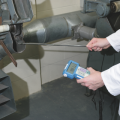When a doctor advices you to undergo a meningioma surgery, there will be certain questions that can crop up in your mind. One might have questions regarding the criticality of the surgery and why they need it and also what is the recovery procedure of it. Also the main concern is what the success rate of the surgery is.
When it comes to meningioma, there are mainly three types of treatment approaches that are undertaken by the doctors. The first step is the observation period where the physicians wait and watch. Then comes the surgery part and meningioma surgery in India is a common process these days. Once the surgery is done there is a radiation therapy performed which is also known as the stereotactic radio surgery.
How the treatment will happen is always guided by the specialised doctors. While treating, they consider some important facts like the grade and location of the tumour, the size of the tumour, the age of the patient and overall health condition of the patient.
The surgery done for meningioma is basically an in- patient procedure and it is performed after the patient is treated with a general anaesthesia. When the surgery procedure happens, the surgeon first performs a craniotomy (here the small section of the human skull is removed to get access to the tumour). The surgeon tries to remove as much as if the tumour possible and it can vary from being the entire tumour or a major portion of it. Then the surgeon replaces the section of the bone and secures it with screws or a plate and finally closes the incision area.
Once the surgery is done the patient is kept in a post operation room to be monitored and once they are confirmed to be stable they are shifted to hospital beds. A patient has to spend a minimum tenure of 3 days in the hospital under expert observation after the surgery is done. Then one has to be at home for the recovery process and there will be restrictions that are needed to be followed.
Risks and Benefits of undergoing this surgery
When you go for any surgery you should know that each surgery comes with its own benefits along with some risks. Now, how big the risks are depends on the complexity of the surgery type and procedure.
Each and every patient is different and so the doctor discusses the benefits and the risks involved in the surgery with them in person. Also the degree of risks depends on the health condition of the patients.
The benefit about this surgery is, the surgeon may succeed to remove the entire tumour and if that happens there is a very low recurrence rate. But the doctor can give a prior idea to the patent whether the entire removal of tumour is possible or not.
But when it comes to the risks, the common ones that are faced are bleeding, blood clots, infection, nerve damage and some after effects of anaesthesia.






























No Comments
Leave a comment Cancel